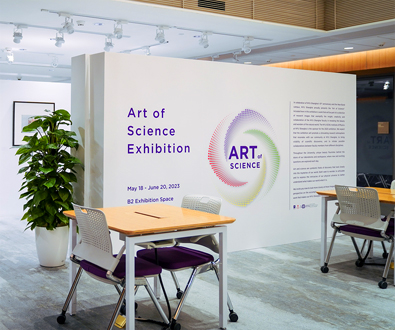
In celebration of NYU Shanghai’s 10th anniversary and the New Bund campus, NYU Shanghai proudly presents the “Art of Science.” Included here in this exhibition is work that will be part of a collection of research images that exemplify the insight, creativity and collaboration of the NYU Shanghai faculty in revealing the beauty and wonders of the natural world. The NYU-ECNU Institute of Physics at NYU Shanghai is the sponsor for the 2023 exhibition. We expect that the exhibition will promote a stimulating research atmosphere that resonates with our community at NYU Shanghai, to bring visibility of scientific discoveries, and to initiate possible collaborations between faculty members from different disciplines.
Throughout the University, unique beauty flourishes behind the doors of our laboratories and workspaces, where new and exciting questions are explored each day. Art and science are symbiotic fields of discovery that look closely into the mysteries of our world. Both seek to wonder, to articulate and to express the intricacies of our physical universe to better understand what makes our world what it is. We invite you now to look more closely at these images to gain a new perspective on the accomplishments of our faculty’s work and the work that makes our NYU Shanghai community what it is.
To request permission to use any of the images or photos on this page, please contact the NYU-ECNU Institute of Physics at NYU Shanghai at shanghai.research.physics@nyu.edu
Click on images for details

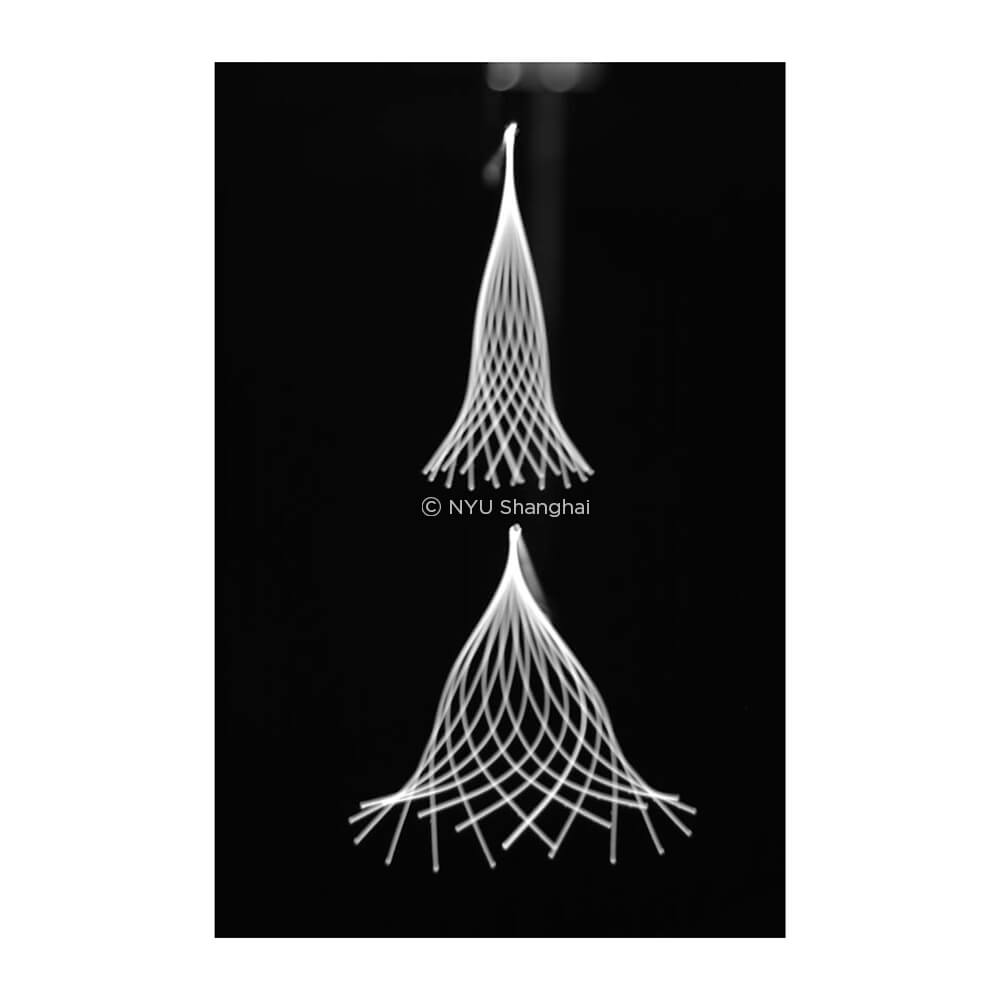
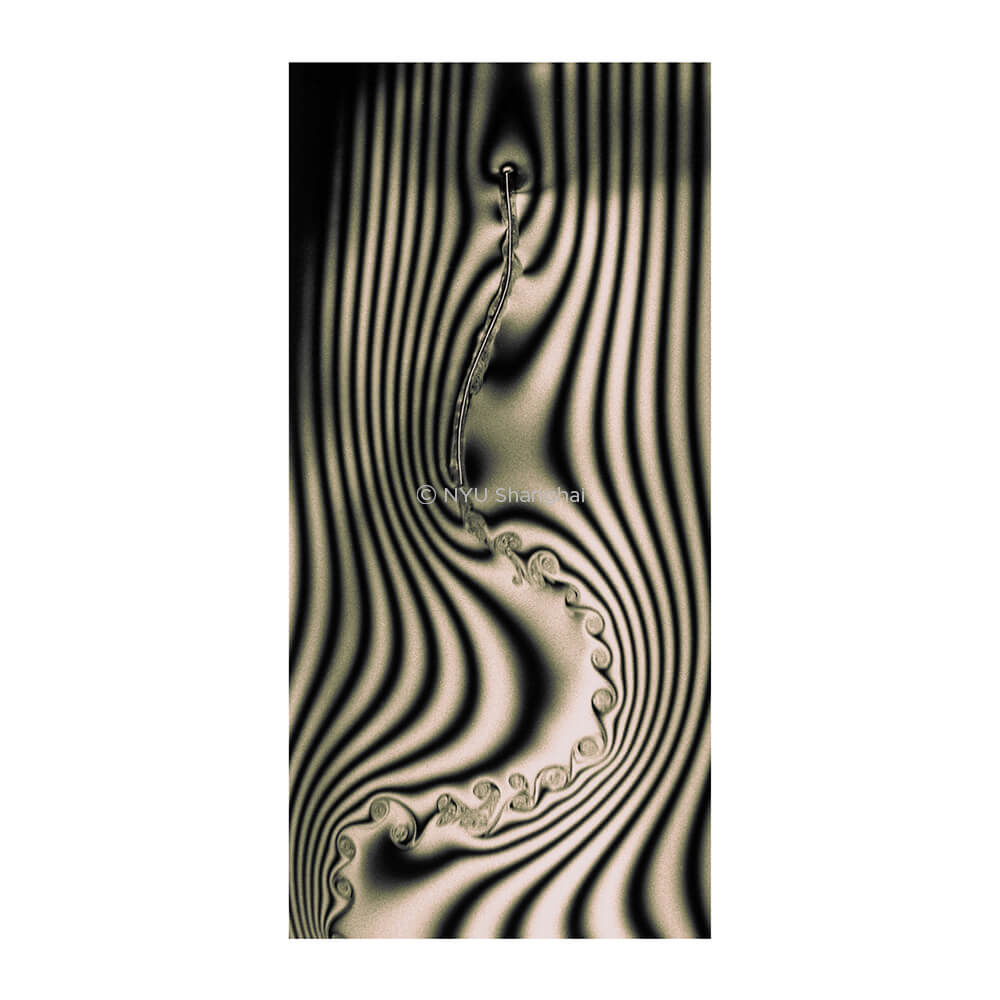
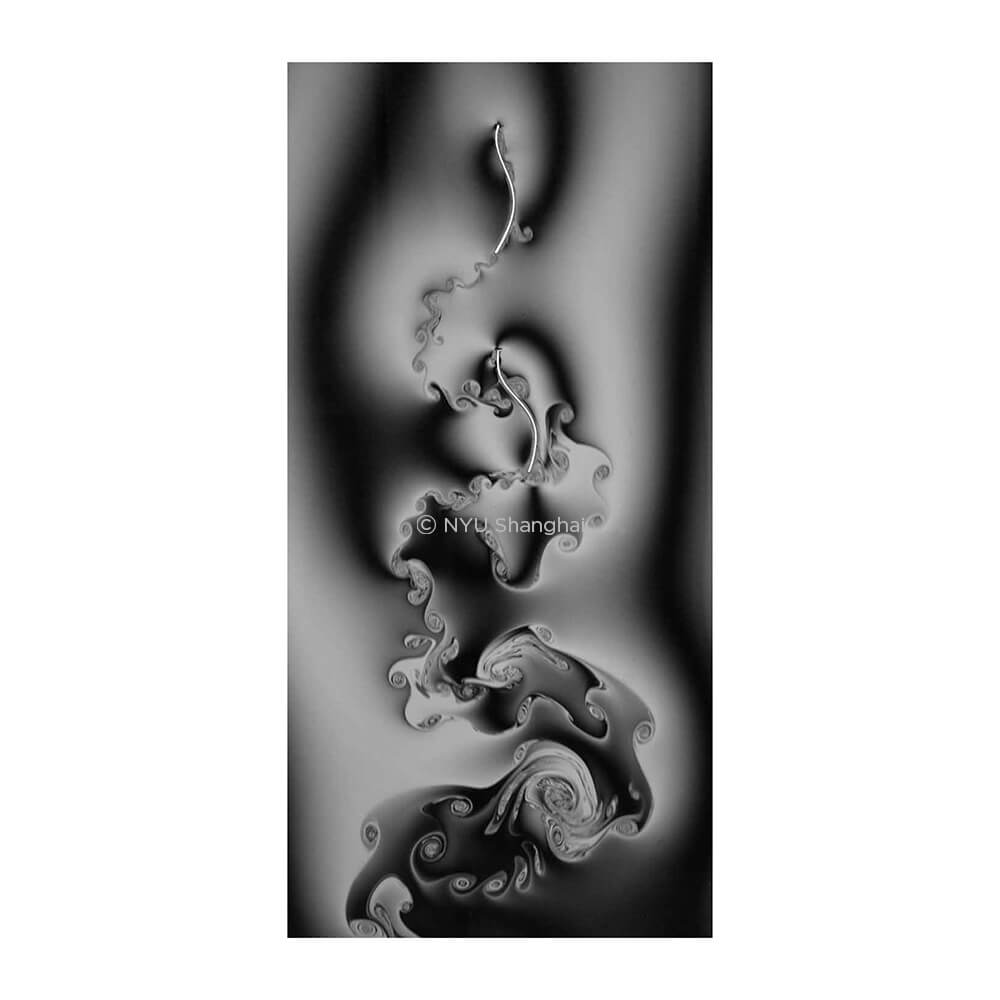
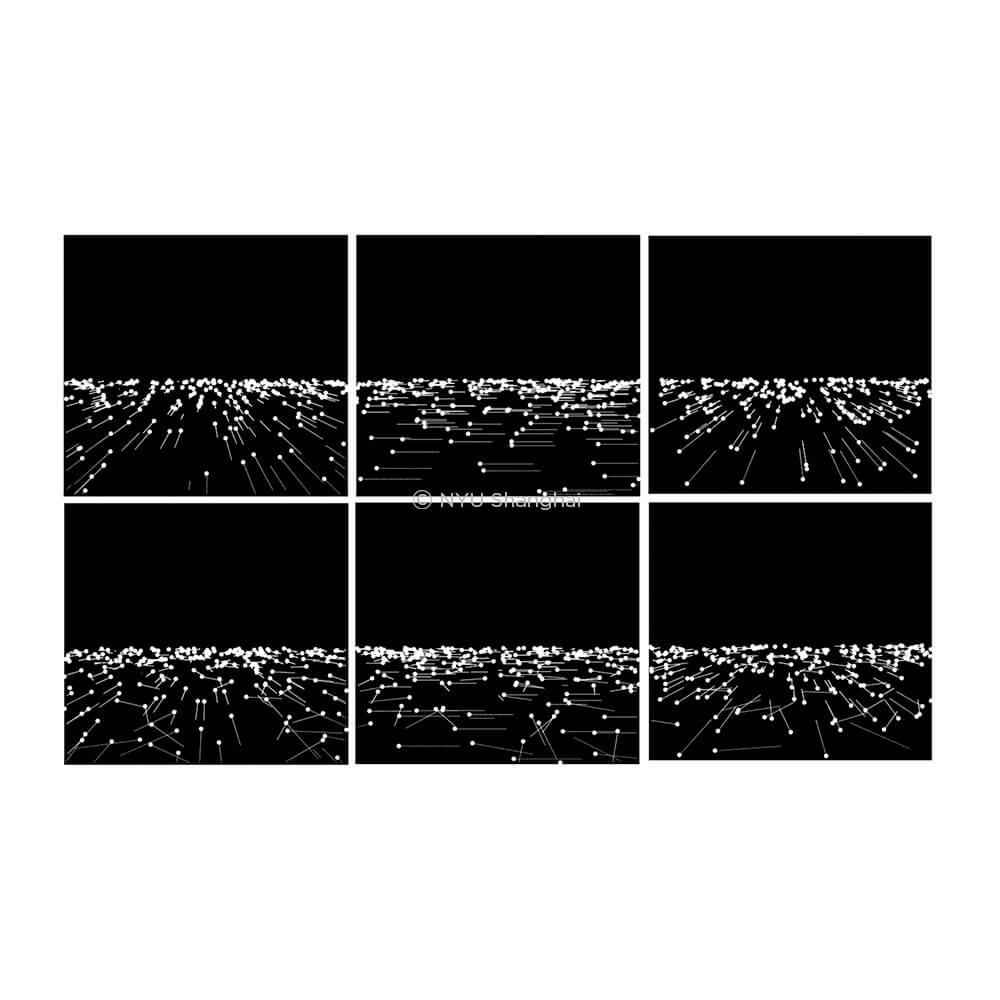
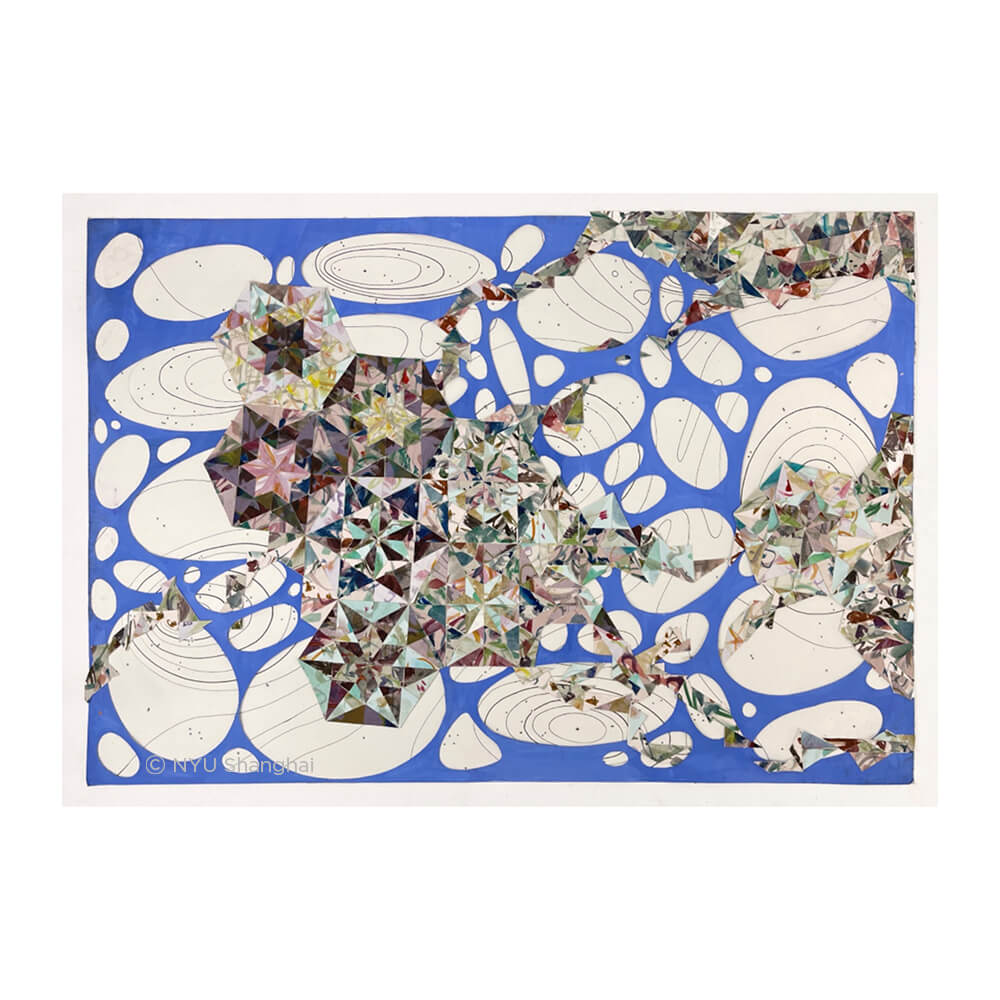
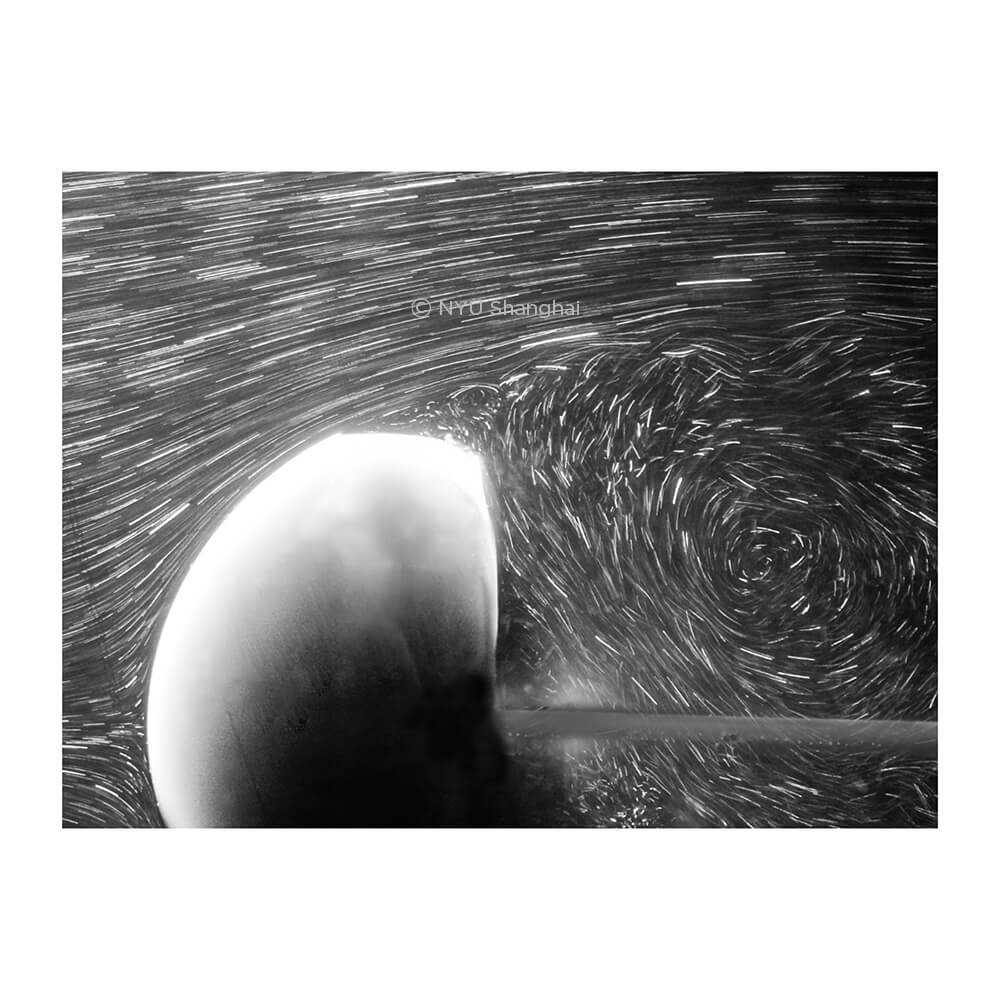
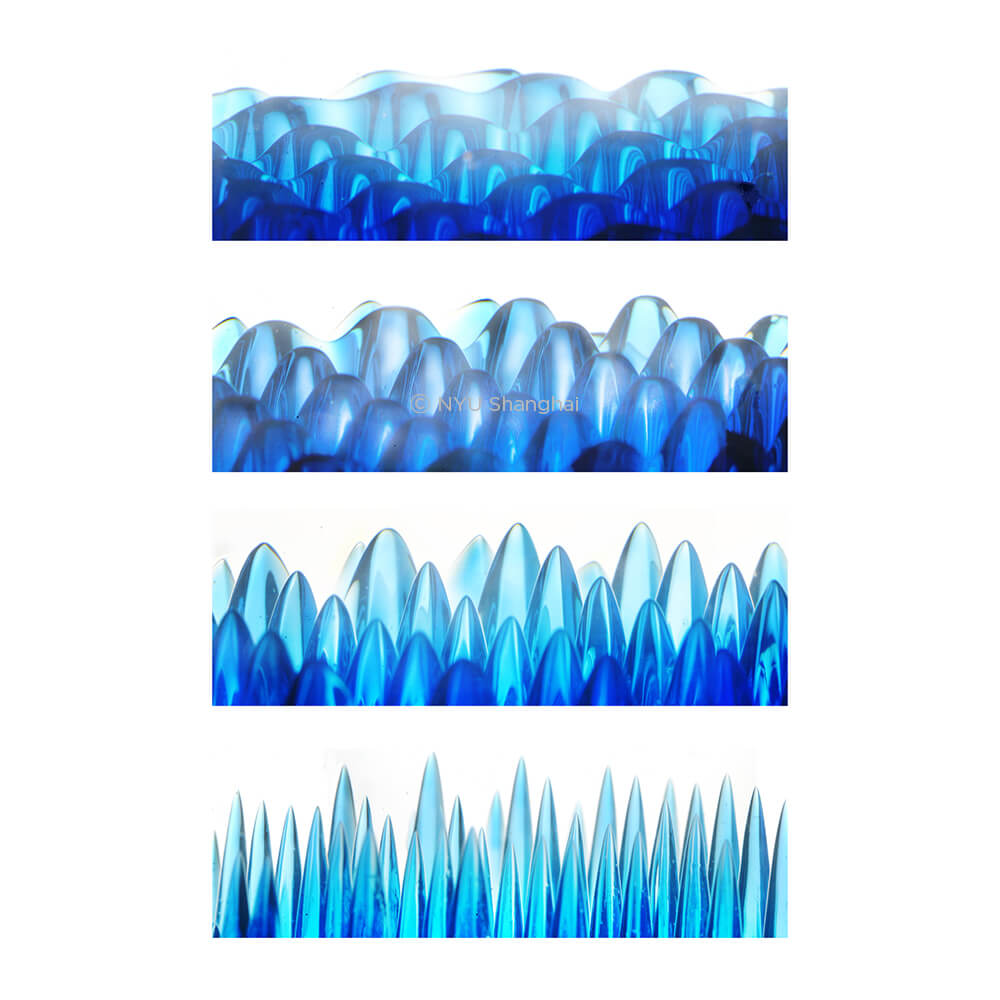
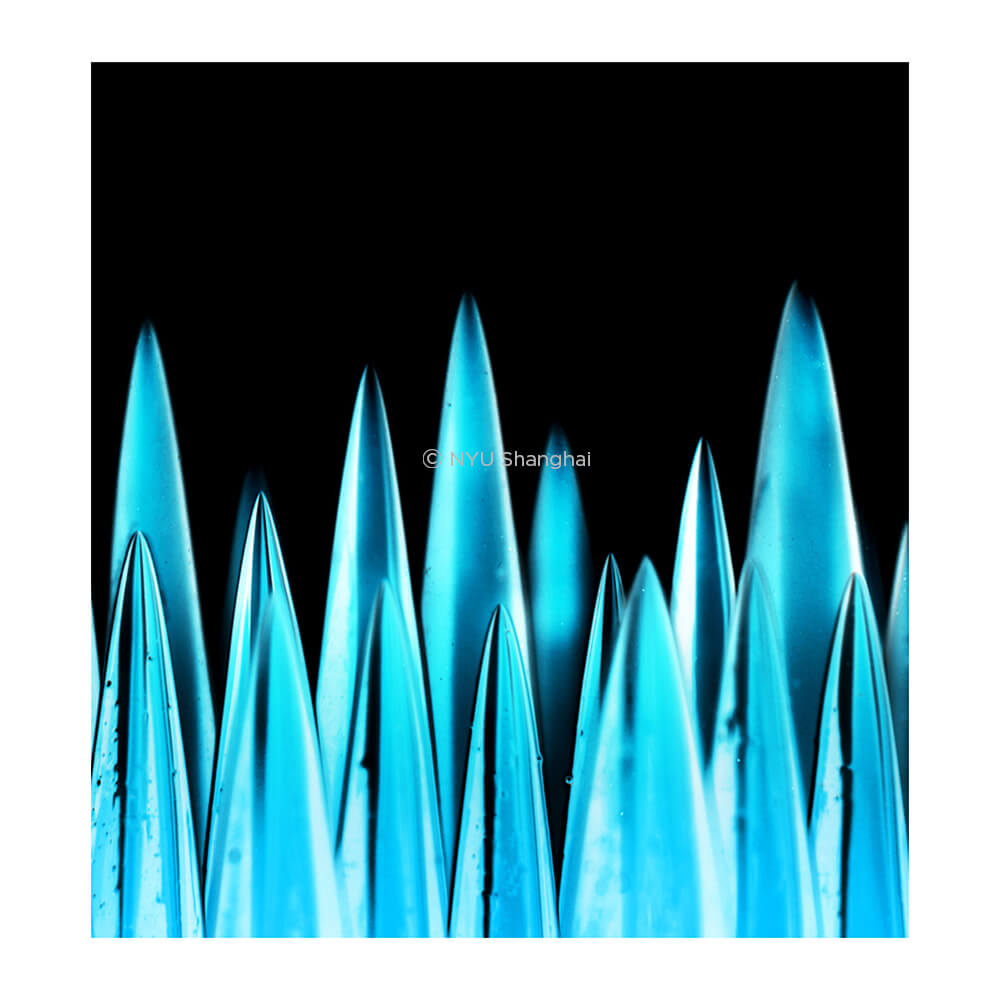
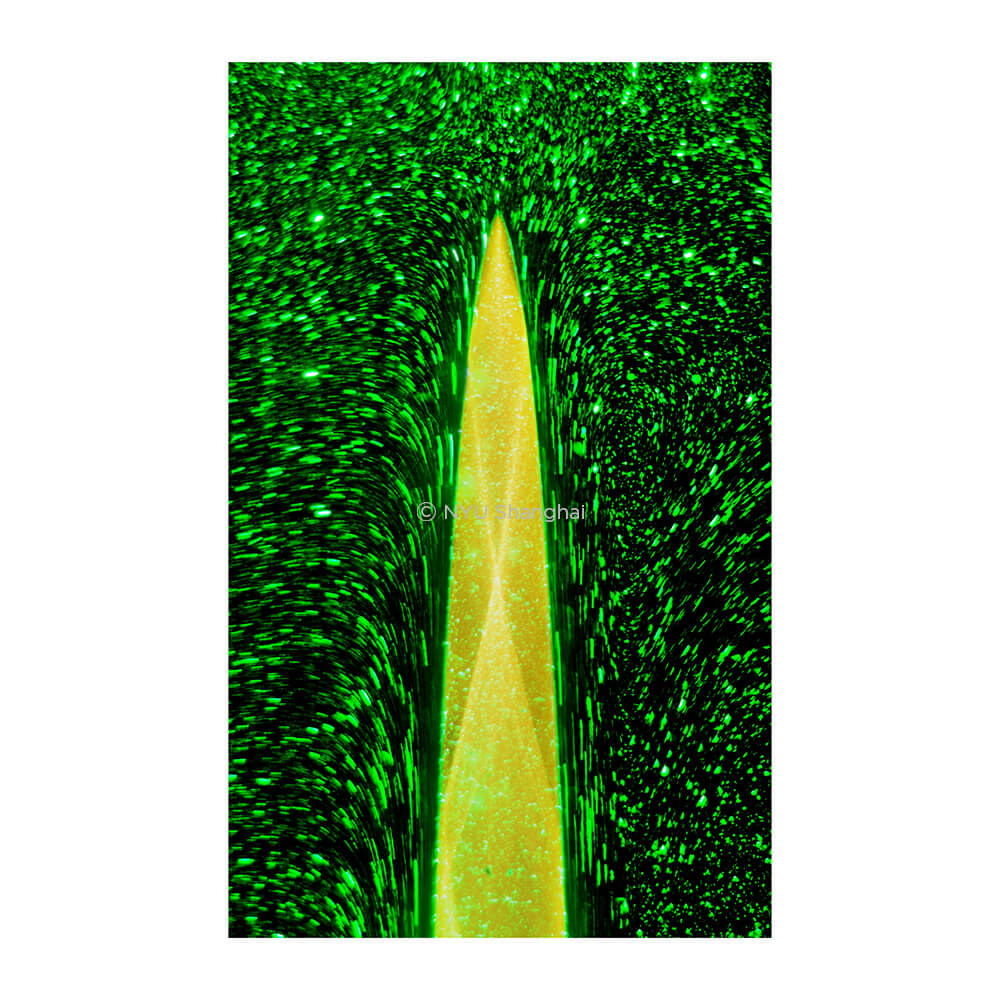

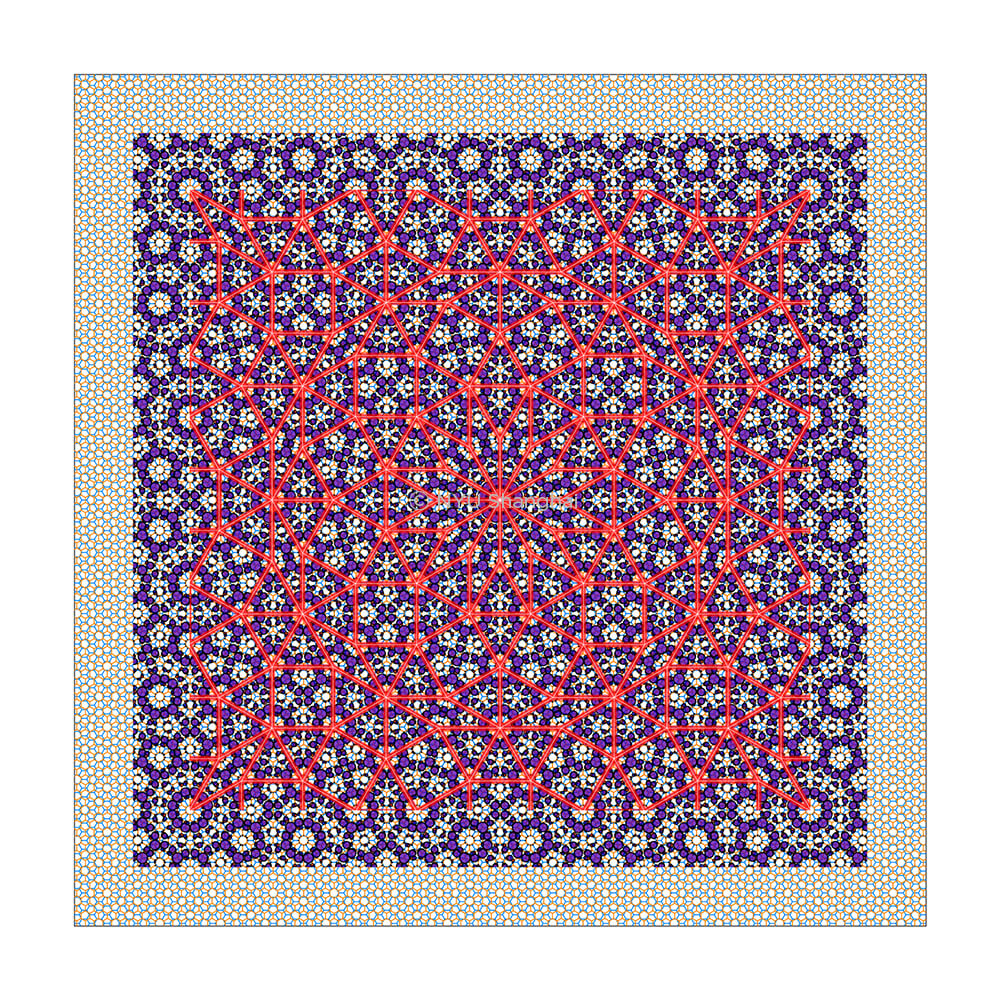
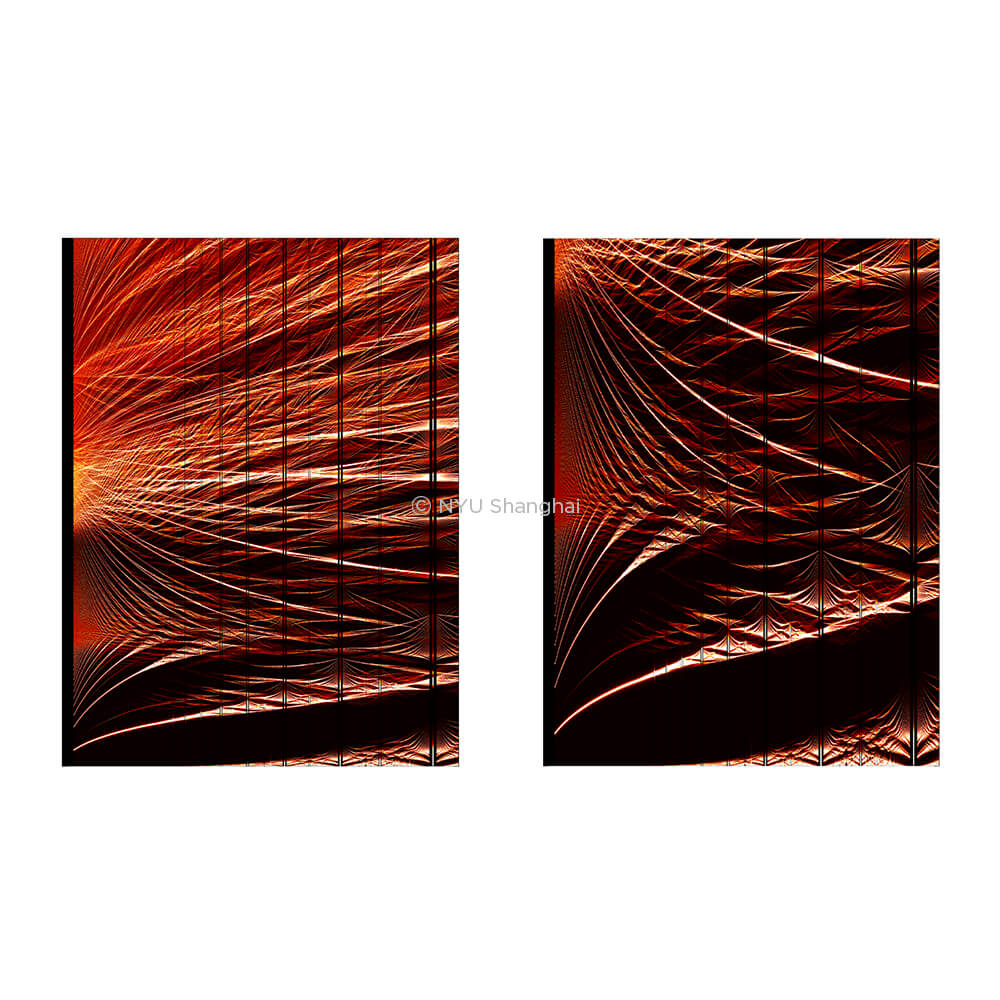
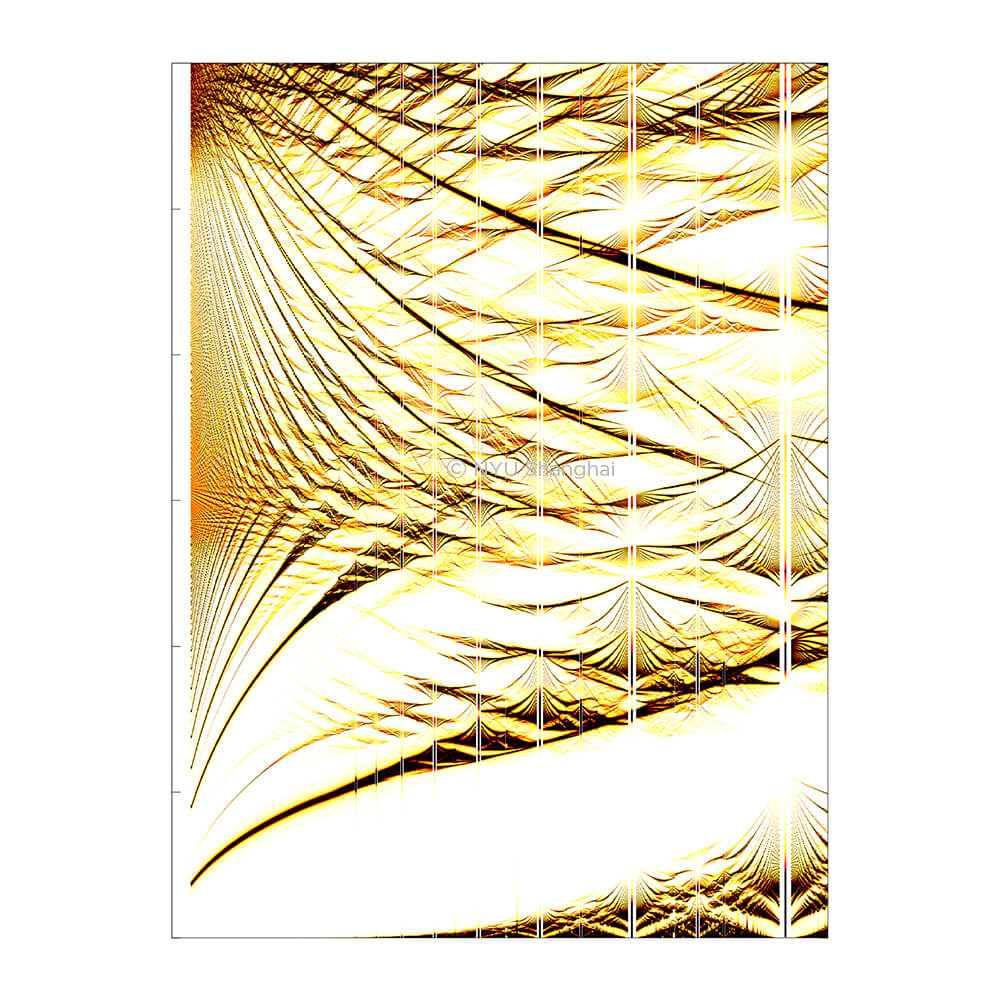
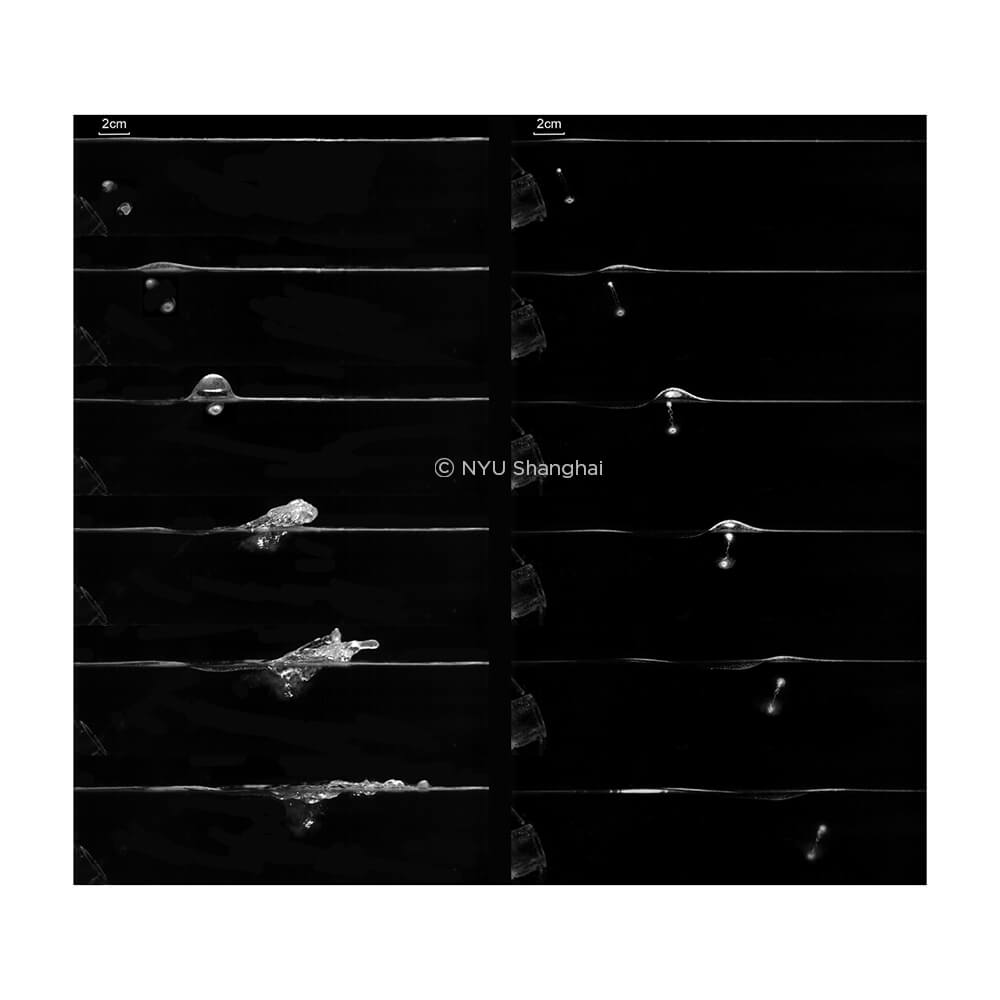
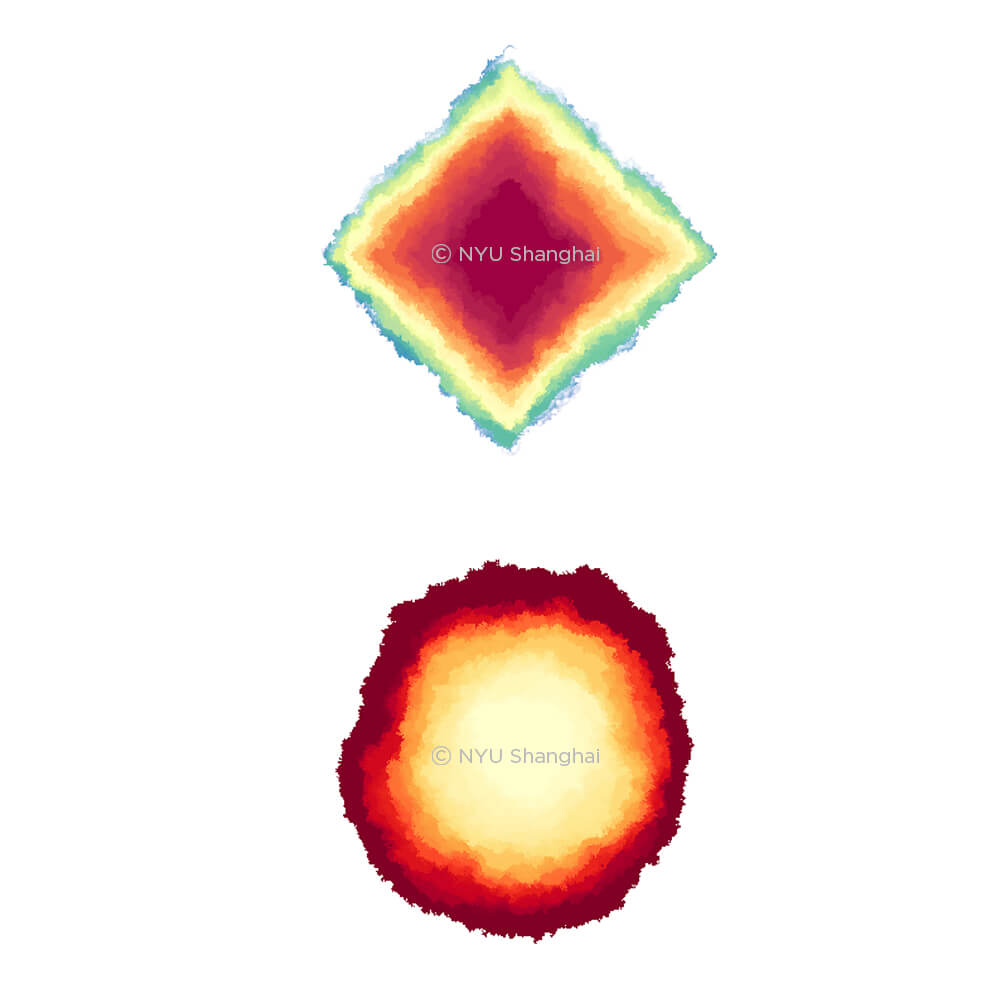
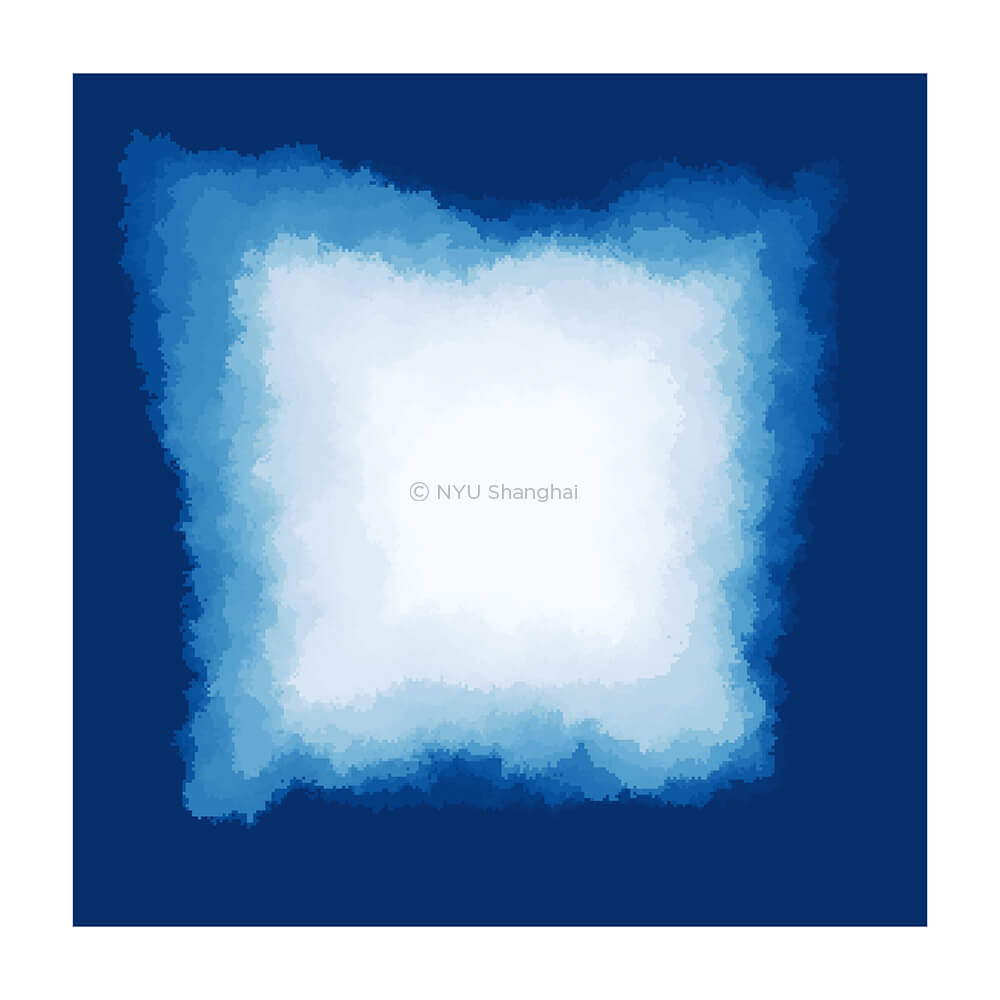
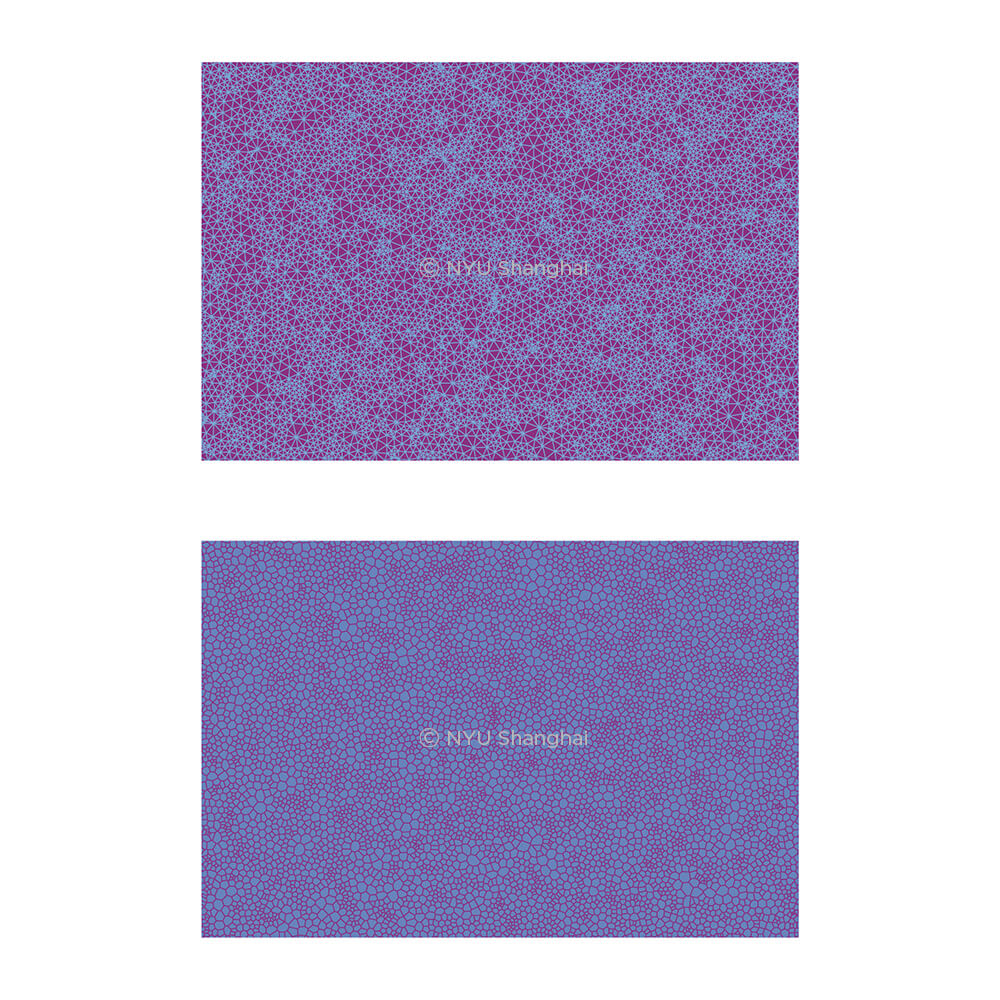
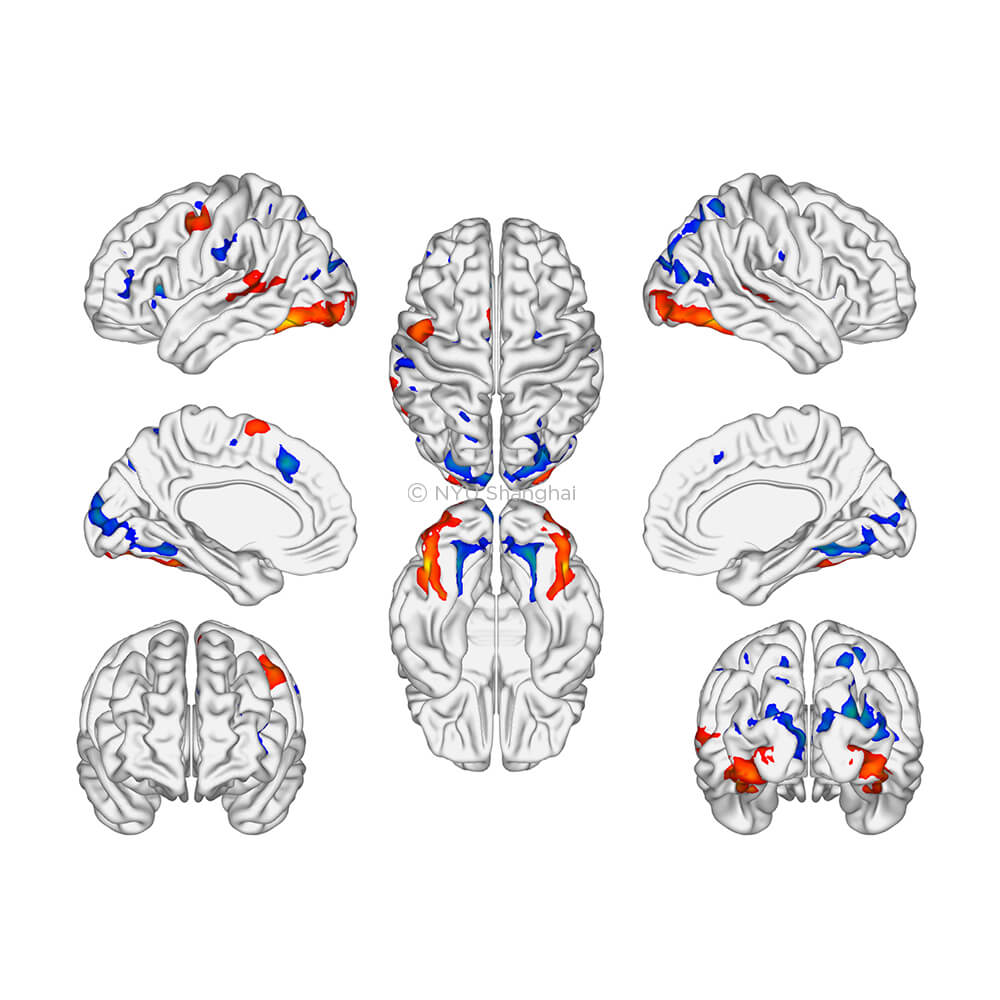
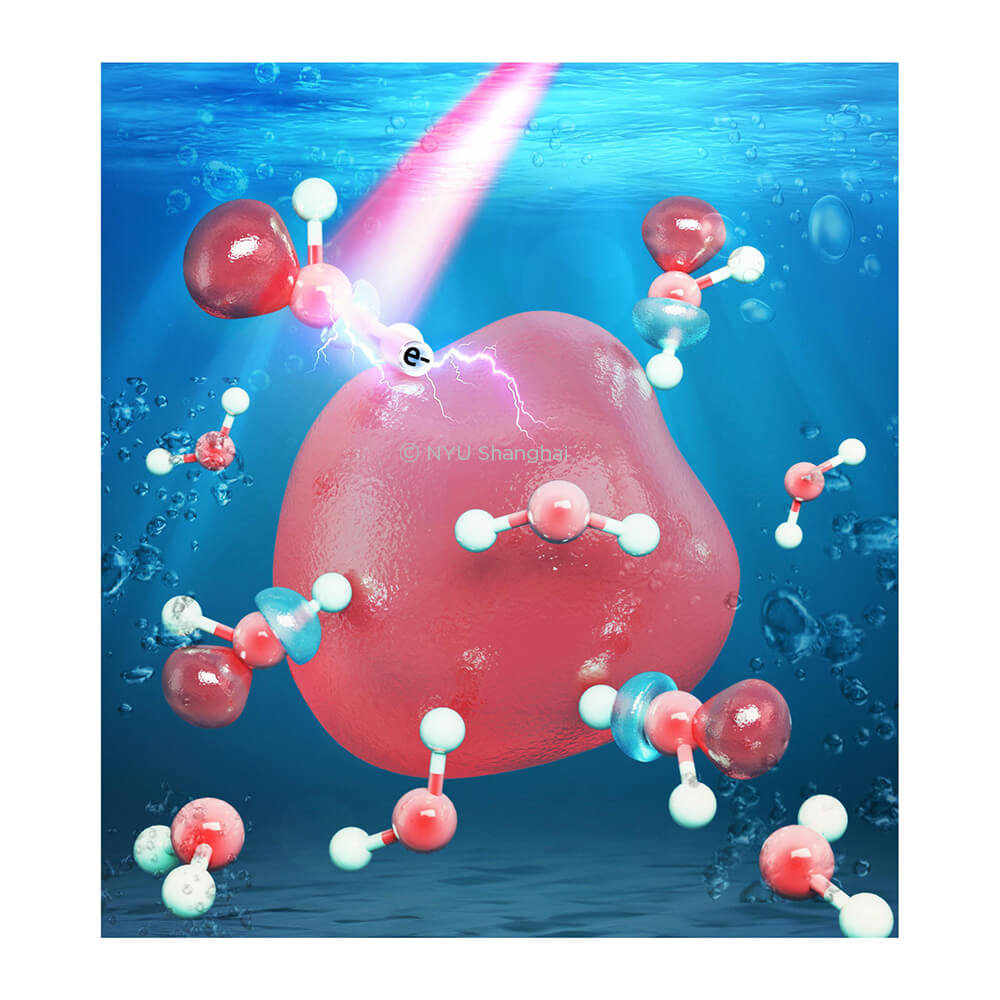

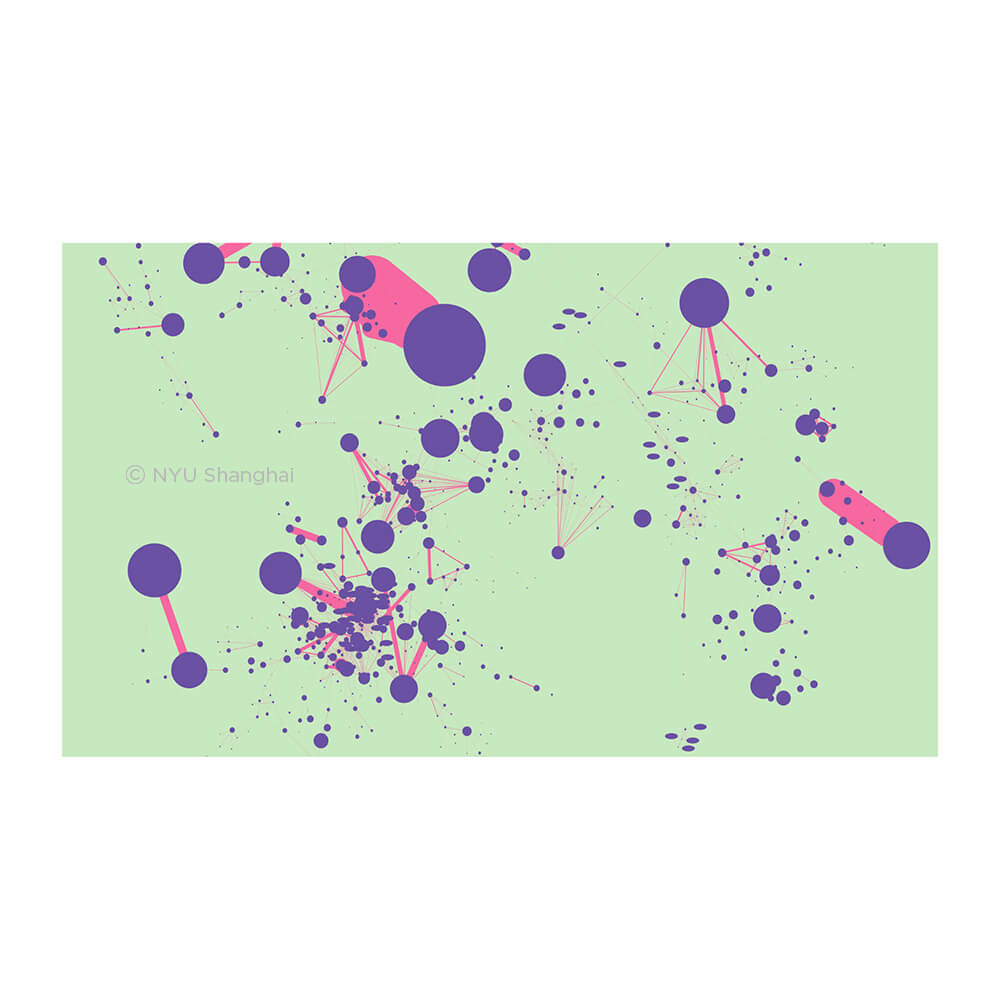



About The Image
In an effort to simulate continental drift, a free boundary is observed to move back and forth under the motion of thermal convection, which is visualized (temperature and speed) by small liquid crystal beads suspended in the flows.
Image Courtesy of
Professor Jun Zhang

About The Image
Two interacting flags are illuminated by stroboscopic flash light. Flapping flags exemplifies flow-structure interactions observed in nature and in many applications.
Image Courtesy of
Professor Jun Zhang

About The Image
A silk thread flaps in a fast flowing soap film, a situation that idealizes the commonly seen flapping flags in the wind. Besides flapping, the flag could also stay stretched straight under the same flow, a phenomenon called bi-stability.
Image Courtesy of
Professor Jun Zhang

About The Image
An instance when two interacting flags are captured together with their complex flows around. The soap film flow is visualized with a monochromatic light; the black and white patches reveal the small variations of the film thickness.
Image Courtesy of
Professor Jun Zhang

About The Image
When we move in the world, the projected optic arrays of the world elements on the eye transform and generate a complex pattern of visual motion, termed optic flow. It has long been proposed that humans use optic flow to perceive and control their self-motion in the world. This image shows various optic flow fields generated by different types of self-motion in a rigid scene. Some are with noisy motion perturbations.
Image Courtesy of
Professor Li Li

About The Image
This artwork (titled Neuron) shows an enlarged neuron centerpiece creating kaleidoscope-like patterns that resemble the chaotic process of ideation, when in the process of forming connections with other neurons. The diagrams in the background represent eye tracking data and graphs. The dendrites of this specific neuron reach through the holes of the blue midground as if trying to construct a vision from the mind.
Image Courtesy of
Professor Li Li

About The Image
A soluble solid piece of candy submerged in a steady flow of water will always end up looking like this-- regardless of its initial shape. Light reflecting particles in the water show the smoothing effect of the flow on the candy's front surface and the flattening effect of the eddies in its wake. Once the candy reaches this shape, it will maintain its form as it continues to shrink self-similarly.
Image Courtesy of
Professor Mac Huang

About The Image
Evolution of the lab-scale stone forests. Starting as a porous candy block like the rocks in nature, the openings widen and in their interstices develop into rounded hills, which then steepen into pillars.
Image Courtesy of
Professor Mac Huang

About The Image
A dissolving candy block spontaneously develops into standing candy pillars, resembling the stone forests seen in Yunan, China and the island of Madagascar. During this process, water seeps into the cracks of the candy block, and these cracks widen as dissolution happens. As the dissolution takes away the majority of the solid, candy pillars start to appear which are further sharpened by the dissolution.
Image Courtesy of
Professor Mac Huang

About The Image
Dissolving candy in still water reveals singular dynamics, and a pointy tip develops as the initially smooth candy pillar dissolves into water. Light-reflecting particles illuminated by a laser sheet show green streaklines, visualizing the flow field around the candy pillar. Even though no external flow is imposed, the dissolved sugar forms a dense sinking current under gravity who further shapes and sharpens the candy surface.
Image Courtesy of
Professor Mac Huang

About The Image
Artificially designed and fabricated quasicrystalline order which is neither periodic nor disordered
Image Courtesy of
Professor Pilkyung Moon

About The Image
Tunable anisotropy of graphene electronic structures with one-dimensional superlattice
Image Courtesy of
Professor Pilkyung Moon

About The Image
Hofstadter's butterfly - A plot showing the fractal (self-similar) evolution of the allowed energies of electrons (vertical axis) under the simultaneous influence of periodic order and magnetic field (lateral axis)
Image Courtesy of
Professor Pilkyung Moon

About The Image
Hofstadter's butterfly - A plot showing the fractal (self-similar) evolution of the allowed energies of electrons (vertical axis) under the simultaneous influence of periodic order and magnetic field (lateral axis)
Image Courtesy of
Professor Pilkyung Moon

About The Image
These two sequences of photos show the interactions between a vortex ring and a water-air interface. When incident with a small angle (left: 55 degree), the vortex ring penetrates the interface and breaks up. When incident with a large angle (right: 70 degree), the vortex ring is reflected as a whole.
Image Courtesy of
Dr. Zhuang Su

About The Image
Cookie Random Walk. A Simple Random Walk in the plane is a random process that describes a path that consists of a sequence of random steps in any of the four cardinal directions with equal probabilities for each of them. In the Cookie Random Walk the walker performs Simple Random Walk but there is one cookie at each possible site of the path. When the walker visits a site for the first time, she eats the cookie and receives a small push towards her starting point. If there is no cookie, there is no push. These pictures show the region visited by the walker (the region with no cookies) as time goes forward. The colors indicate the time when each site was visited for the first time. It seems that the visited region adopts a deterministic shape as time evolves (different shapes correspond to different rules for the push), but no one was able to prove that so far.
Image Courtesy of
Professor Pablo Groisman

About The Image
Cookie Random Walk. A Simple Random Walk in the plane is a random process that describes a path that consists of a sequence of random steps in any of the four cardinal directions with equal probabilities for each of them. In the Cookie Random Walk the walker performs Simple Random Walk but there is one cookie at each possible site of the path. When the walker visits a site for the first time, she eats the cookie and receives a small push towards her starting point. If there is no cookie, there is no push. These pictures show the region visited by the walker (the region with no cookies) as time goes forward. The colors indicate the time when each site was visited for the first time. It seems that the visited region adopts a deterministic shape as time evolves (different shapes correspond to different rules for the push), but no one was able to prove that so far.
Image Courtesy of
Professor Pablo Groisman

About The Image
Harmonic Delaunay Graph and Voronoi Tessellation. A graph on the plane is a set of points linked by edges. If two points are linked we call them neighbors. Harmonic graphs are those that have the property that each point is exactly in the center (barycenter) of its neighbors. Harmonic graphs usually look “harmonic”, despite the name having nothing to do with this fact. These two pictures are the outcome of research on harmonic random graphs. Given a random set of points in the plane we can construct a graph by linking the points that are “close” to each other. Is it possible to deform this graph to turn it into a harmonic with local movements (each point moves just a little bit from its original position)? The answer to this question has important consequences in probability theory and other fields.
Image Courtesy of
Professor Pablo Groisman

About The Image
Brain maps of the human mind's inner symphony, revealed by functional magnetic resonance imaging (fMRI). Colors indicate distinct brain activations during the imagination of speech and natural sounds. The extensive patterns suggest the diverse neural mechanisms through which our brains artfully weave the tapestry of subjective experiences.
Image Courtesy of
Professor Xing Tian

About The Image
When water is subjected to ionizing radiation, a host of reactions occur, some of which lead to the formation of hydrated electrons - a single electron that is supported by the liquid, but not bound to any single molecule (depicted as the red surface in the image). These electrons are highly reactive species and can even damage DNA, ultimately leading to cancer; however, our understanding of them is incomplete. By comparing simulations to experiments in which hydrated electrons are probed with X-ray light, we discovered that they interact strongly with surrounding water molecules, weakening their bonds. This gives us new insight into their damage of DNA.
Image Courtesy of
Professor William Glover

About The Image
The co-crystal structure of the protein SHMT2 and a potential inhibitor. The red, yellow and blue lines represent the pi-pi, pi-alkyl, and van der Waals interaction.
Image Courtesy of
Professor John Zhang

About The Image
This image presents a corner of a space that showcases protein relationships based on a novel metric inspired by Google's PageRank algorithm. By having proteins "vote" on the distances between one another, the visualization offers a unique perspective on their interconnectedness.
Image Courtesy of
Professor Gang Fang

About The Image
A view inside the vacuum chamber housing the atom chip. The circular windows allow for optical access to the chip, which allows for quantum control of the atoms.
Photo credit: Alice Wang, Assistant Arts Professor of Visual Arts, NYU Shanghai
Image Courtesy of
Professor Tim Byrnes and Dr. Valentin Ivannikov

About The Image
The seven trap atom chip. The Z- and U-shaped wires produce magnetic fields in such a way to trap atoms in its vicinity. High power wires carry several amps of current to the atom chip.
Photo credit: Alice Wang, Assistant Arts Professor of Visual Arts, NYU Shanghai
Image Courtesy of
Professor Tim Byrnes and Dr. Valentin Ivannikov

